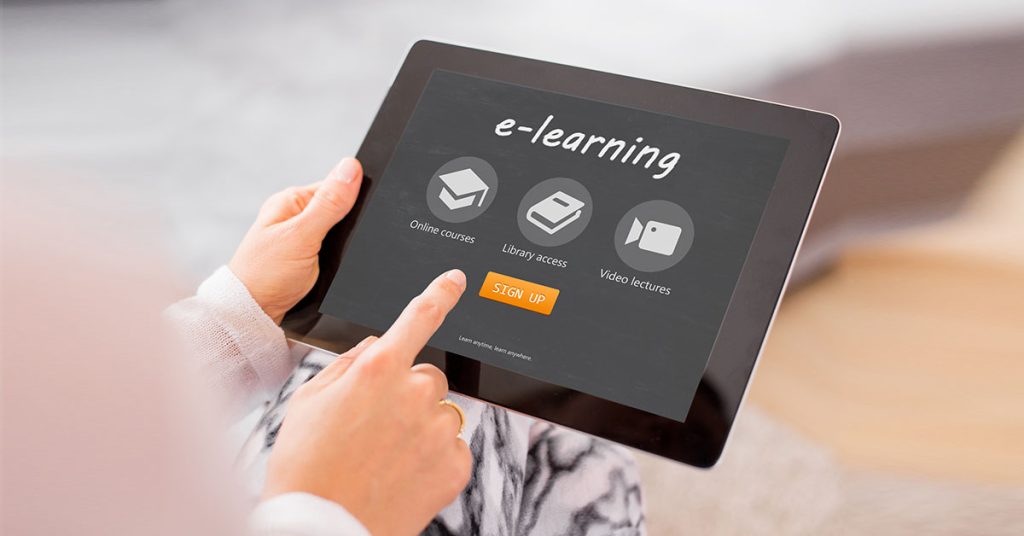
5 Strategies to Improve Your Learning Management System
Summarize this blog with your favorite AI:
Online classes and eLearning have become the norm in this digital era. With an increasing number of educational institutions and corporate organizations embracing virtual learning avenues, this sector is growing at an astounding rate. Market data suggests that the online education sector is set to increase at a CAGR of 8.56% (CAGR 2024-2029).
The market volume of this sector is expected to reach USD 279.30 billion by 2029. As the demand for eLearning continues to grow, the need for learning management systems that can deliver efficient results has arisen.
Learning Management System (LMS) is regarded as an L&D streamlining solution for educational institutions and corporate organizations. While you may have already acquired one for yourself, it’s important to have your LMS platform aligned with your needs, mission, and goals. Optimizing your LMS tools may seem like a daunting task. However, by implementing the right strategies, you can enhance the effectiveness of your LMS.
This blog reveals 5 top strategies for improving your LMS.
Let’s get into the details.
Table of Contents
I. What is a Learning Management System (LMS)?
II. Benefits of Learning Management Systems
- Organized Data Storage
- Easy Access to Learning Content
- Efficient Tracking of Learner Progress
- Facilitates Customized Learning
- Easy to Alter or Update Content
III. Improvement Strategies for the Learning Management System
What is a Learning Management System (LMS)?
A learning management system refers to a software tool that empowers you to enhance learning efficiency, manage users, and organize data. It facilitates streamlining of learning processes to achieve excellence across the entire learning system.
At its core, an LMS is a system designed to benefit both educational instructors or employers and learners (students or employees).
It enables learners to access eLearning content conveniently at any time and from anywhere. At the same time, it allows administrators to organize content, manage user data, and keep track of learner progress. The system also allows for seamless statistics collection and running reports for analysis.
Overall, it streamlines the entire training or learning process.
Related Read: 5 Employee Training Management Software that You Must Consider
Benefits of Learning Management Systems
An LMS offers a host of benefits for organizations of all sizes. Here are some of the benefits that you can achieve by implementing an LMS for your training processes.
Organized Data Storage
An LMS enables you to store all your online content in one place and in a systematic way. This reduces the risk of losing essential data. You can also access data easily whenever needed.
Easy Access to Learning Content
After uploading the content to your LMS, learners can easily access it. Your employees or students will be able to access content conveniently from anywhere.
Efficient Tracking of Learner Progress
Your LMS allows you to track learner progress, determine the effectiveness of your learning content, and make changes accordingly.
Facilitates Customized Learning
Once eLearning content is uploaded on the LMS, employees or students can learn at their own pace. They can adjust their schedules to incorporate learning into their routine easily.
Easy to Alter or Update Content
With an LMS, you can easily add, delete, or update online courses based on your requirements. All you need to do is access the system and make the changes.
Improvement Strategies for Your Learning Management System
Acquiring an LMS for your organization is just one part of the task. The other part involves optimizing your LMS for enhanced outcomes. This is where improvement strategies come into play.
Implementing effective strategies can maximize the potential of your LMS. Let’s examine some of the top improvement strategies for optimizing your LMS.
Bank on the Strengths of Your LMS
Every business learning management system is different. Each platform comes with its specific features and special functions.
There are plenty of examples of learning management systems in the market. Some are targeted for student assessment, while others are built to deliver quality audiovisual content to online learners. Some solutions focus on text-based material and utilize lesson and page loading to charter students through the course. Meanwhile, other platforms are designed for immersive learning or are geared to distribute ebooks to online platforms.
Whatever your approach might be in teaching and training, develop your curriculum, design your instruction methodology, and craft your training modules and lesson plans according to the strengths of your learning management system.
Rather than wasting time hammering your digital lessons into whatever functions your platform may have, work with your system by aligning your lectures and your course flow with its strengths and capabilities.
Educate yourself on your learning management software’s features and familiarize yourself with how it can make mobile learning more engaging for your students. That way, you can make the most out of your platform and create an effective e-learning environment where your students or trainees feel empowered.
Make Learning More Interactive
Whether you are an organization that professionally holds training and lectures or a company undergoing digital transformation in education and development, incorporating active learning styles to engage students is crucial to executing effective learning.
Even if you have interesting themes and rich source materials, your students will not be able to grasp the concepts you present without an interactive teaching method. You need to create and deliver cost-effective remote training by using techniques that spark high engagement. To help you achieve this in your digital classes, enlist the help of your learning management system.
The best LMS platforms can deliver engaging course content that is available across all devices without the need for any setup. They have functions that enable you to accompany your print material with multi-media content that sparks interest among your students, daring them to ask questions and seek answers.
Apart from this, they also allow instructors to provide interactive assessments to their students, making sure they stay engaged as you map out their learning progress. A good learning management system example also offers robust insights and analytics so that you can fully grasp your students’ behavior and development in class.
With these active learning features, it’s impossible for your learners to sleep through your courses.
Harness the Power of eBooks
eBooks? What’s not to love about them? They’re printable and portable, and you can view them across various platforms. They also boost worker and learner potential, just like these 6 ways to be productive, efficient, and engaged at work.
When marketers and educational institutions introduced ebooks, they were limited to digital copies of literary text. Now, eBooks have transformed into interactive and immersive learning tools. They’ve incorporated multimedia elements into their electronic pages, and they’re also extremely convenient, which plays a big factor in boosting student morale, motivation, and participation.
Given all these, it’s enough to say that eBooks are a valuable addition to online courses. As we’ve said in our first point, some examples of learning management systems are geared towards distributing digital content.
If yours has a cloud-based function that reliably publishes and hands out ebooks across digital devices, make the most out of it. You will be lucky if your learning management system also can also automatically and conveniently rehash your eBook into an ePub format so that multiple e-readers can support it.
Last, but not least, remember to check whether your platform also has robust features that allow you to assess and monitor your learners. Although eBooks may offer multi-sensory learning through their engaging content, it’s still important to determine whether your students are gaining anything from reading or studying them.
Hop in the AR/VR Trend
The eLearning Industry recognizes that immersive learning, done through augmented reality, is how students will eventually tackle education in the future. It takes virtual education to new heights, enabling educators to level up their immersive online courses.
With capabilities that ingrain information more rapidly into students’ minds, AR offers learners a more pragmatic path that leaves behind traditional learning tactics and allows more room for individual exploration driven by self-guidance.
A learning management system comparison will show you that some systems offer features that integrate and improve tangible materials with virtually substantial content. For instance, students can recover these by pointing the solution-enabled device at a particular element containing AR content.
Through this interactive learning method, learners can be surprised at the page-linked assets they unearth during their training. Because education no longer has to be limited to the four walls of a classroom or the physical pages of a book, you can be sure that this will spike engagement and lead your students toward the future of the virtual classroom.
Building Your eBook Store
There are many places where your students can purchase ebooks online, but what if they don’t have to go through that hassle and instead buy online materials from your business learning management system?
If your learning management system has functions that allow your organization to construct your own ebook webstore, maximize that capability to promote extra convenience for your learners. Explore features that can enable you to organize categories, fix prices, and arrange promotions for your ebooks. Smoothly integrate a trusted payment gateway so that you can secure profit for your educational efforts.
Lastly, much like your learning management system, make sure that your online shop can be accessed through multiple platforms so your students don’t have to worry about which device to use when purchasing an ebook.
Follow the Trends, Forge Your Own Path
The technologies brought by a reliable learning management system will be more and more important as the world wades the waters of a digital revolution.
Your business learning management system will be an essential asset in your training, onboarding, and professional education and enrichment. Securing your institution or corporation’s familiarity and engagement with your software will definitely guarantee the optimization of your learning management platform.
If you are looking for a platform capable of creating eLearning courses that are compatible with your LMS, you can explore KITABOO. From developing interactive training content for professionals to creating eBooks for students, this platform remains at the forefront of all such activities. It also ensures quick integration of such content with your existing LMS using LTI standards.
Want to know more? Connect with us now!
Also check:
- Digital Textbook Platform for K12 Publishers
- Digital Textbook Platform for Associations & Societies
- Digital Textbook Platform for Trade Publishers
- Digital Textbook Platform for Training Companies
- Digital Publishing Solution for Content Aggregators
- Digital Publishing Platform for Professional Training
Discover how a mobile-first training platform can help your organization.
KITABOO is a cloud-based platform to create, deliver & track mobile-first interactive training content.



